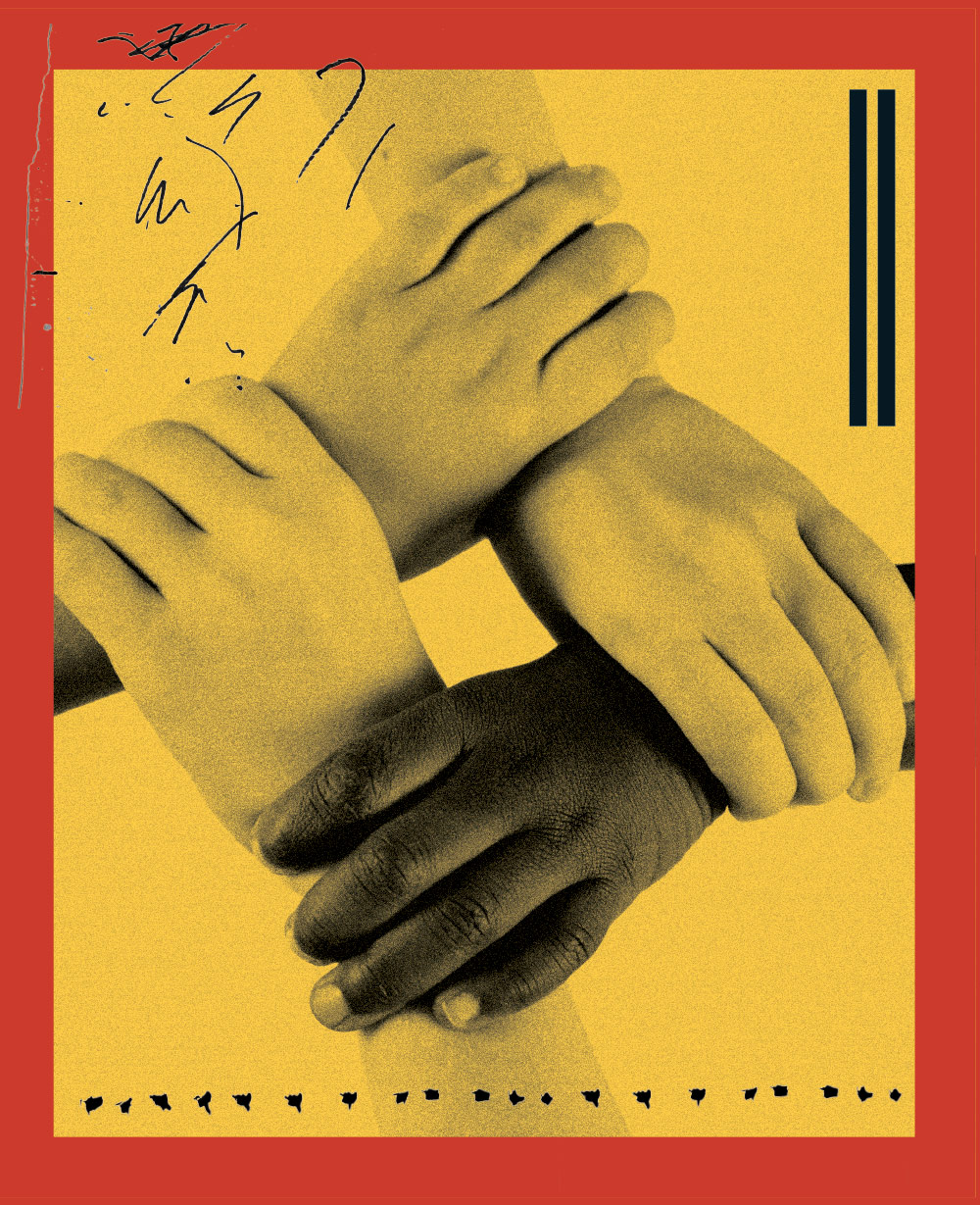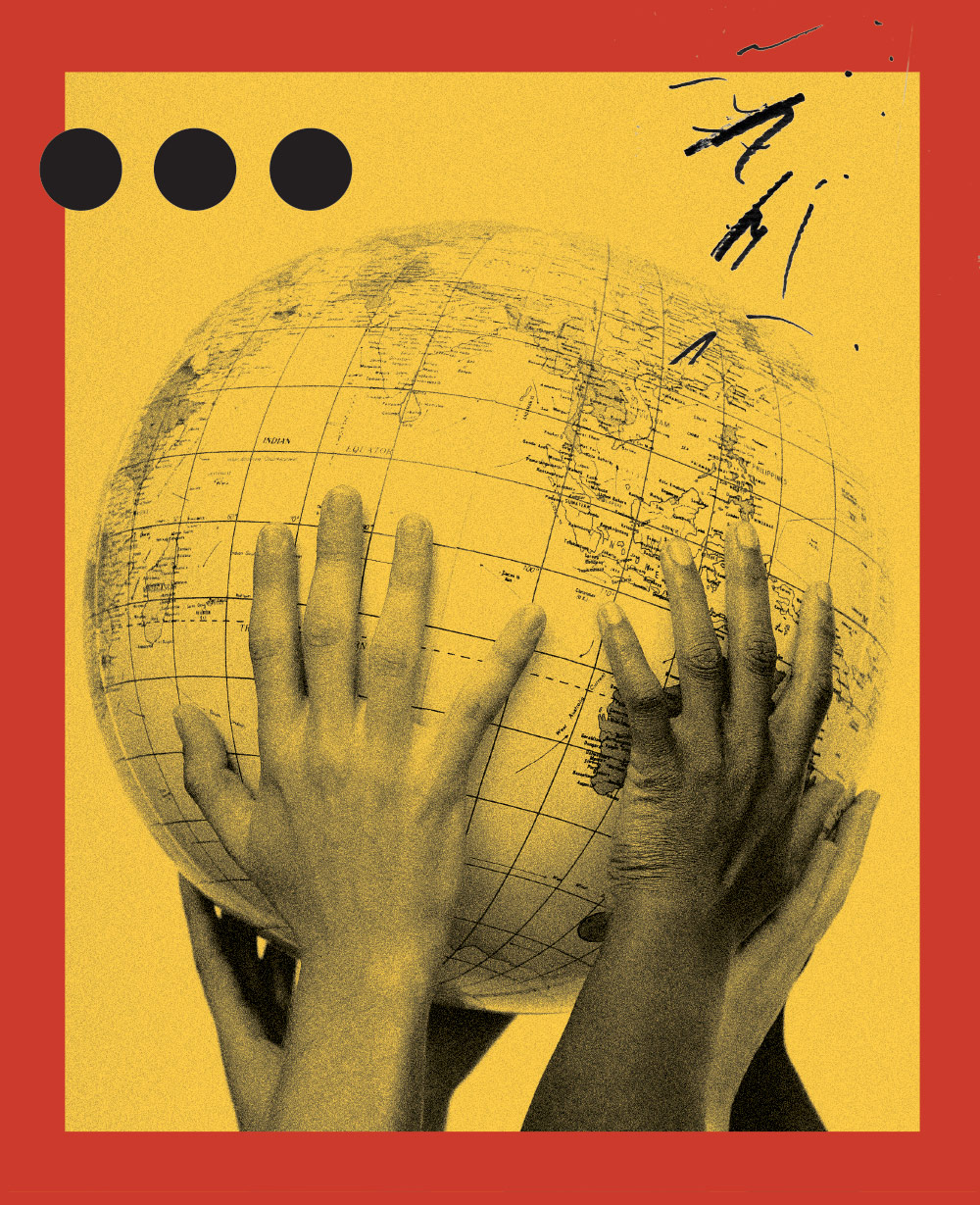Black brand owners react to anonymous case studies, offering personal insights to inspire change and promote peace moving forward.
Case Study One
The Instagram Illusion
 Since launching five years ago, a white-owned children’s brand has almost exclusively used white models in its marketing. The social media manager posted a black square on Instagram for #BlackOutTuesday, which quickly attracted hateful comments. Several accusations of discrimination surfaced, and some customers have even threatened to boycott the brand.
Since launching five years ago, a white-owned children’s brand has almost exclusively used white models in its marketing. The social media manager posted a black square on Instagram for #BlackOutTuesday, which quickly attracted hateful comments. Several accusations of discrimination surfaced, and some customers have even threatened to boycott the brand.
“I’m reminded of a statement: People may not remember what you say, but they will remember how you made them feel. Posting a black square while marketing with non-diverse models feels disingenuous and inauthentic. Authenticity comes from the heart. It must be the soul of the company. And that begins with leadership. A truly authentic leader will not only be seen; but most importantly, she’ll be felt. This is not going to be solved by a slick ad campaign. But, by deep diving into the company’s leadership and culture.” —Dr. Lisa Williams, founder of Fresh Dolls
“In the case of a brand that has not diversified its marketing for years, the #BlackOutTuesday message on Instagram seems like a patronizing act rather than one of solidarity. As the owner of the company, I would quickly shift my efforts to more inclusive marketing practices and any other policies that might shed light on the fact that this company does not practice acts of discrimination.” —Darionne LaQuel, founder of Ciao Bella Collection
“When a white-owned brand visually markets with mostly white models and then post a square to show allegiance to black lives, it is a form of gaslighting. Even though the product was never marketed to the Black community, the brand would like to protect themselves from negative press and the risk of losing dollars from potential customers of all colors. The business owner should face the conflict head on by confirming the identities of their actual target customers. If the marketing over the five years did not reflect the targeted customer, then the brand should make more of an effort to become more aware and involved with the community. Have focus groups with customers of color and work on advertising that is racially diverse. Also, if the brand has a substantial number of employees, it’s important to ensure the team reflects that same diversity.”—Mo Glover, founder of ZYEM NYC
Case Study Two
Not My Problem
A family brand with an international following has always used diverse models in its marketing. About 60 percent of the company’s employees are white. The vice president is Black, while the rest of the C-Suite is white. When the BLM movement started up, the founder continued business as usual—no protesting, no donations, no statements. The president doesn’t feel it’s necessary to do anything differently. As she puts it, her brand is “obviously not racist.”
“Leaders should be so imbued with the passion for making a contribution to society that they magnetize others to join them. Everything begins with leadership. As leaders we need to reveal—and then dispel—any false teachings and erroneous thoughts of inequality. When leaders become self-aware, they recognize and honor the humanity in everyone. Until then, blind spots will distort their vision. They will believe a diverse marketing campaign will make up for the lack of diversity in employees and the C-Suite.” — L.W.
“The president may be sincere in her feelings. However, if she did not wish to participate in the protest or make a donation, she should have at least released a profound statement indicative of the company’s empathy for the BLM movement. Not doing anything did not allow her to show solidarity or publicly express support from company. I would have made a decision to protest, donate or release a statement representing my companies stand on equality. I recently discovered “stream-to-donate” videos, which allows individuals to financially contribute to Black-led organizations and funds without actually spending any of your own money. The creators of these videos have promised to donate their advertising revenue to organizations that are helping the movement. ” —D.L.
“Systematic racism is a public health crisis. The president of the company may feel she doesn’t have to do anything, and that is her right. Any actions or stand that individuals or organizations choose to take will face some type of criticism from a group with a different perspective. There will not be a case of having too much support when fighting a crisis and healing. Since the brand has an international following, it would help heal the crisis by helping to get the message of anti-racism across even if it’s donating it adding more representation of color to the C-Suite.” —M.G.
Case Study Three
Challenging Times
 An up-and-coming black retailer, known for great customer service in her community, has begun openly supporting the BLM movement. She shares lists of Black-owned businesses, highlights black-owned products at her store and occasionally participates in peaceful protests. She recently noticed a decline in her Instagram’s following, and one customer made a comment during a FaceTime appointment, asking how long her actions around BLM would continue. The retailer doesn’t want to lose customers—especially amid a pandemic when business has been particularly difficult. She wonders whether she should stop posting about BLM to avoid losing sales. Because of how tough business is, she almost feels like she doesn’t have a choice.
An up-and-coming black retailer, known for great customer service in her community, has begun openly supporting the BLM movement. She shares lists of Black-owned businesses, highlights black-owned products at her store and occasionally participates in peaceful protests. She recently noticed a decline in her Instagram’s following, and one customer made a comment during a FaceTime appointment, asking how long her actions around BLM would continue. The retailer doesn’t want to lose customers—especially amid a pandemic when business has been particularly difficult. She wonders whether she should stop posting about BLM to avoid losing sales. Because of how tough business is, she almost feels like she doesn’t have a choice.
“I think the leader should expand her vision. Currently, she sees the only way to support Black Lives Matter is through social media posts and listing black owned businesses in her store. There are so many ways she can support the movement and honor her beliefs, without alienating her customer base. She could make donations; create an item where all the proceeds go to BLM; work with more diverse suppliers; increase the percentage of black vendors; sponsor a group of black artists; start an internship for black high school students; create college scholarships; the list goes on! There are numerous ways the leader can support the movement, be true to her heart, while not alienating her customers.” —L.W.
“As a new black retailer, it is a very difficult decision to make. I have a strong conviction to stand for what I believe in and anything I feel strongly about. It is my opinion that being honest and fighting for what you feel is right and just is part of your character. This may not always align with your business, however once your reputation is established as honest and fair, I whole heartedly believe this will outweigh any negative repercussion of your business.” —D.L.
“There can be a fine line between catering to customer needs and maintaining brand integrity. There is enough money circulating and endless potential customers and platforms that will not have a problem with her brand posting about BLM.” —M.G.
Case Study Four
Building Trust
A business recently released a diversity statement. Customers began reacting on social media and sending emails directly saying how the statement doesn’t sound sincere. The business owner reacts by showing proof of two recent donations to BLM organizations. The business is then accused of doing it “because they feel they have to.” The owner feels defeated, not knowing how to make people believe his efforts are sincere.
“Customers are demanding a new playbook. In the old playbook, companies would have a PR firm write a statement, they’d make a financial donation and then soon return to ‘business as usual.’ Well, as the old adage says, ‘that dog won’t hunt.’ People are expecting and demanding more. They want to see real change. Customers want to see the brands they support have a comprehensive plan to support equality and fairness.” —L.W.
“A global uprising is happening right now in support of Black Live Matter movement, during which most companies have been urged to do something. As the business owner, I would make it known to my customers the areas in which I am diverse in, and all the expressions of support I’ve done in the past. I would also express how I plan to support on-going initiatives, not only through financial giving but in important ways to enact change for the black community.” —D.L.
“As a business the best way to show authenticity is maintain consistency. There will always be criticism when any action is taken. I would suggest keep moving forward in a positive manner and allow actions to speak for themselves.” —M.G.
Case Study Five
Standing Strong
A white retailer participated in a peaceful protest. The evening after the protest, her store was severely vandalized and looted by a group of black and white individuals. About 60 percent of her inventory was taken, the front window was shattered, and graffiti was everywhere. After barely staying open during the pandemic, the owner becomes hopeless and bitter, looking at the new damages. She no longer wants to participate in protests. She thinks it’s safer for her to just stay silent for now.
“Entrepreneurship is difficult. It requires persistence, passion and creativity. As an entrepreneur, there are many nights I go to sleep saying, ‘That’s it. I’m done!’ But in the morning, I remind myself of the why. When I remember why I create a line of multicultural dolls, continuing another day becomes easier. This leader is facing a challenge. It may appear as protests and looting. But it’s a challenge for her to remember her why. Why she opened her shop. Why she’s making a difference in the world. Why she and her shop are needed. The why will inspire her. This inspiration will ignite her passion, and her passion will bring forth creativity. Creative ideas will help her move forward one more day…then to the next day, then the next day and then the next.” —L.W.
“A lot of people are feeling mentally and emotionally exhausted right now, just from watching the events of the past two weeks unfold. While that’s a completely natural response to hearing and seeing a lot of violence and anger at once, we must not let it exhaust us to the point that we stop talking about it. That goes especially for white people, who can opt not to discuss or think about racism because it doesn’t directly impact them. Instead of shifting the focus back to myself as the business owner, I would try to put my pain aside as there is a being cause. I would continue the fight for social justice and equality, and find black leaders in the community to partner with to continue to educate myself.” —D.L.
“The retailer should not associate her peace protesting with the vandalism of her store. It is unfortunate what happened to her business, and I’m sure it was devastating. Silence is also a statement. It helps to maintain or grow involvement in the community so that the community can help deter any vandalism from happening again. Network with non-profit organizations activist groups, district leaders, fellow business owners and neighbors. Safety helps in numbers.” —M.G.





 FASHION IS MY PLAYGROUND
FASHION IS MY PLAYGROUND 
 The Chi
The Chi



 The
The

 The top expo for kids and baby
The top expo for kids and baby
 The 2025 Earnie Awards are officially OPEN! I
The 2025 Earnie Awards are officially OPEN! I


 From milestones to everyday magic, @ryleeandc
From milestones to everyday magic, @ryleeandc

 BEST IN SHOW: @milaandrose
Twirl-worthy, pla
BEST IN SHOW: @milaandrose
Twirl-worthy, pla





 This season’s
This season’s



Leave a Comment: